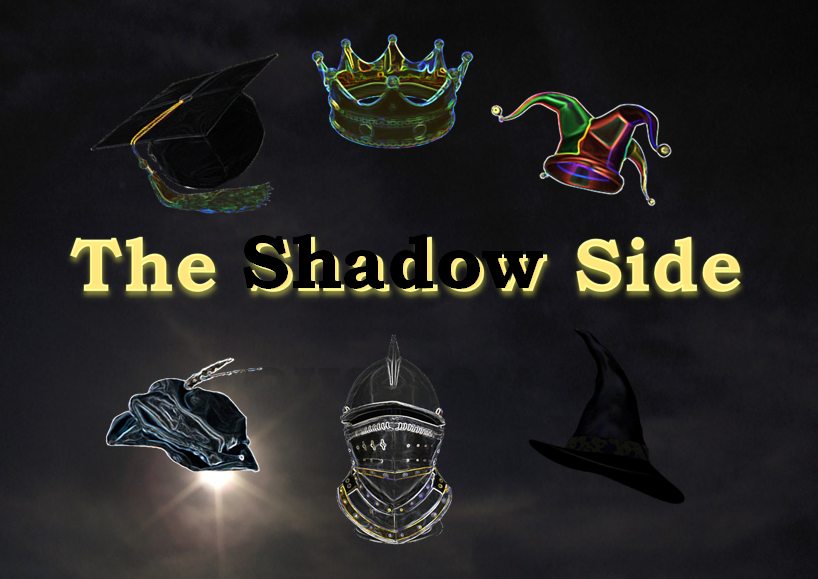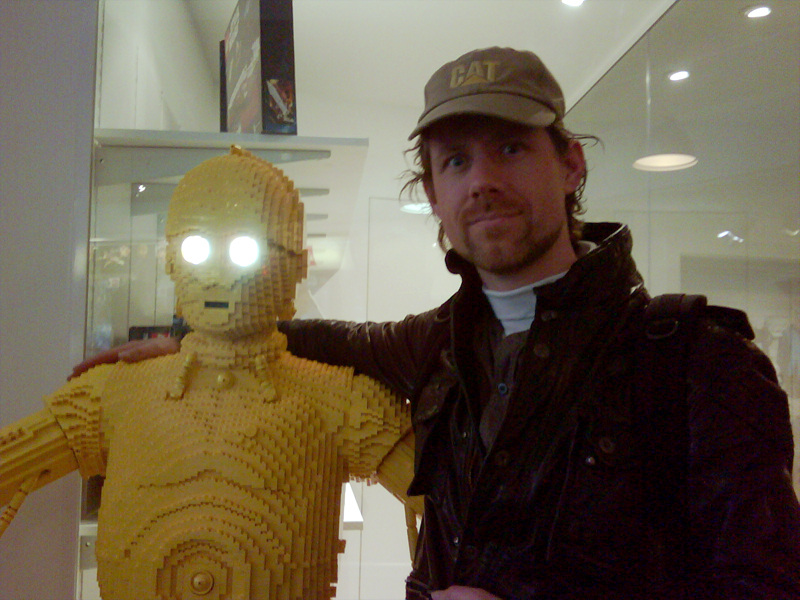|
**This is an excerpt from Chapter 6 of TEAM ME - now widely available on Amazon and virtually every other online book store** The Shadow Side During a private coaching session, I had introduced my client to the whole concept of Archetypes and led him through an exercise that helped him to connect with, and release, his ‘Sage’ in a very powerful way. The results were immediate and, he told me later, had made a huge difference in his relationship with his fiancée. As we rounded up he asked me a very good question, “Is it possible to have too much of one of these archetypes?” What we’ve focussed on thus far have been the healthy, mature expressions of each archetype; emphasising the good things that each one is naturally able, and inclined, to contribute. We wouldn’t normally be concerned with anyone being ‘too mature’ or ‘too healthy’, but it is possible – in fact we should acknowledge that it is actually very common – for some of these archetypes to get out of balance – sometime chronically. Something that Carl Jung recognised many years ago is that each of these archetypes also has a dark side; a characteristic set of negative behaviours that can cause real damage to both the individual and those within their circle of influence. It is often said that someone’s greatest strength is also their greatest weakness and this phenomenon can be predicted very specifically for each archetype. This dark side will often arise with the purpose of meeting our personal needs as rapidly as possible, often when we are stressed or fearful, and it will manifest itself in two broad ways; either as too much of an archetype’s traits, or too little of them. If you can imagine each archetype being measured by its own thermometer, you can probably grasp the idea of there being a moderate zone of temperature that would represent the healthy, mature archetypal traits we’ve discussed thus far. But if the temperature rises above this zone, we’d say this character is now getting overheated; and, equally, if the temperature dropped too low, the same character would become frozen, inactive and stifled in its expression. H20 A similar metaphor we might use for this is found in the various states in which we can experience water: H20. Water is, of course, vital for every kind of life. Yet it has to be at a moderate temperature for any living organism to benefit from it, because only then can we drink it or wash with it or even give it to our plants. However, if the very same water becomes too hot (or too energised, we could say) it can scald, hurt and even kill. Likewise, if it is frozen it can’t be absorbed, it can’t nourish us - we can’t even wash things with it. Turning to ice, it can block or burst our pipes, weigh down and break our power lines, paralyse our transportation, stifle our movements, immobilise our muscles, or even kill. So the very same substance can sustain life within a certain range of temperature and can cause much damage when too far above or below this range. In exactly the same way, each of our archetypes can provide great benefits to us if expressed within a moderate, balanced (healthy and mature) range of temperament – and can equally do great damage outside this range; either overheating or freezing. Summarising this:
The Balanced (or mature) zone contains all the positive qualities we’ve detailed so far. It should be our aim to remain in this place, where a healthy expression of our archetypes’ key traits is evident and everyone around us benefits. The Overheated zone is where we launch into a predictable set of excessive expressions that invariably cause hurt and damage to ourselves and others. The Frozen zone represents an evident lack of archetypal expression. Here the individual appears unable to access the abilities and strengths of a particular archetype, even when the situation is demanding it from them, and such a lack of appropriate response will render them quite ineffective. What’s interesting is that each archetype displays very specific behaviours when it either overheats or freezes; when it operates with either too much, or too little energy. Most people will find that their strongest traits, whilst mature and balanced much of the time, will on occasions flare up and overheat. This ‘untempered’ strength needs to be effectively managed if damage is to be limited. An archetype may also dive into a ‘frozen’ state of inactivity – usually in response to stressful situations or a major failure after giving something their best shot. Even strong archetypes can lapse into this state when they’ve thrown everything they’ve got at a particular challenge and it is still not overcome. For under-developed or immature archetypes however it may take little more than a certain tone of voice or a certain look from someone to cause them to ‘freeze up’ this way. Jung referred to these negative zones as ‘shadows’; giving us a sense that the very thing that can bring us the help we need - the positive, mature archetype - also carries with it a darker side that is always present and potentially very damaging. [This was a short essay I had to submit as part of my Life Coaching Certification exam - thought you might like to read it.]
Generally speaking, a client is only going to seek the assistance of a life coach when they realise that what they are currently doing is not achieving their desired outcomes. As all behaviours are controlled by thinking, the life coach needs to help their clients become more aware of how their current thinking patterns are affecting their behaviours. Fostering self-awareness in their clients is the single, most important thing any coach can do as it is the factor upon which all solutions are based. Because of this, self-awareness is found at the core of the ‘Big Picture’ coaching model; it empowers the client to take greater responsibility for their thinking in any given situation and thus steers them towards their results. Self-awareness is crucial because every client (and even every coach) will inevitably retain various ‘blind spots’ that prevent them seeing what they could be doing to remedy their particular situation. They may be running habitual patterns or strategies that are unwittingly sabotaging the achievement of their personal goals. Whatever they say they want, they are often running mental scripts or behavioural patterns that undermine their stated intent. A mechanic must have a clear understanding of how her machine works if she is to make any adjustments to it. If she doesn’t have a high level of awareness on the matter, she will not be able to fix anything that is broken nor identify where improvements or adjustments are necessary to improve the machine’s performance. Whilst this provides a reasonable metaphor for the work of a coach, it should be recognised that the ‘mechanic’ is not actually the coach, but the client. The coach should not be seen as a surgeon who ‘fixes’ their patient, but rather a facilitator whose key aim is to enable the client (the mechanic) to develop their own understanding of their ‘mental machinery’ and also identify the most appropriate tools to address the challenge at hand. Such tools or both the client and coach would involve: sensory acuity (a keen sensitivity to the reactions and responses to one’s communications and behaviours), healthy introspection (primarily through the use of empowering questions) and meditation. So the coach should always aim to foster within their client a deep sense of self-awareness and the desire to nurture this attitude for themselves – so that, ultimately, the client becomes their own best coach. In this way they will learn to become alert to the tell-tale signs of self-sabotage, self-imposed limitation or constraint and become skilled in asking themselves empowering questions that will provide them new options and facilitate growth and progress. Robert Dilts’ ‘Logical Levels’ provide an excellent framework for such questions – helping the client to identify the level, or realm, within which the challenge exists: Environment, Behaviours, Capabilities, Beliefs, Identity or Spirituality. Other helpful frameworks could include: Perceptual Positions, The 6 Human Needs (Robbins) and The Meta Model (Bandler/Grinder). It is also vital for the coach to demonstrate their own self-awareness to their client. If the coach demands that their client becomes self-aware but refuses to acknowledge their own blind-spots, they will quickly lose credibility with the client. Remaining open to the feedback of others and candid and honest about their own journey towards greater self-awareness can overcome this and engender a desire for greater self-awareness in the client. Conclusion It can be argued that every challenge is a mental challenge and that with the right thinking, all the resources required to achieve any goal can be made available. Self-awareness is central to all personal development as it provides understanding of the processes that are helping or hindering the achievement of goals. This can be summed up in one of the presuppositions of NLP, which states that ‘everyone is in charge of their minds and therefore of their results.’ Superior thinking, based upon a deeper self-awareness, will always lead to superior results, and it should therefore be the continual practice of the life coach to nurture such thinking in all their clients. |
AuthorPad is a trusted adviser to business leaders across the globe. He is Director at Come Alive Success Coaching ltd. and the Author of TEAM ME - How to Play Your Best Game in Life, and TEAM GUY - Forging Men of Soul & Steel. Archives
August 2023
Categories
All
|




 RSS Feed
RSS Feed